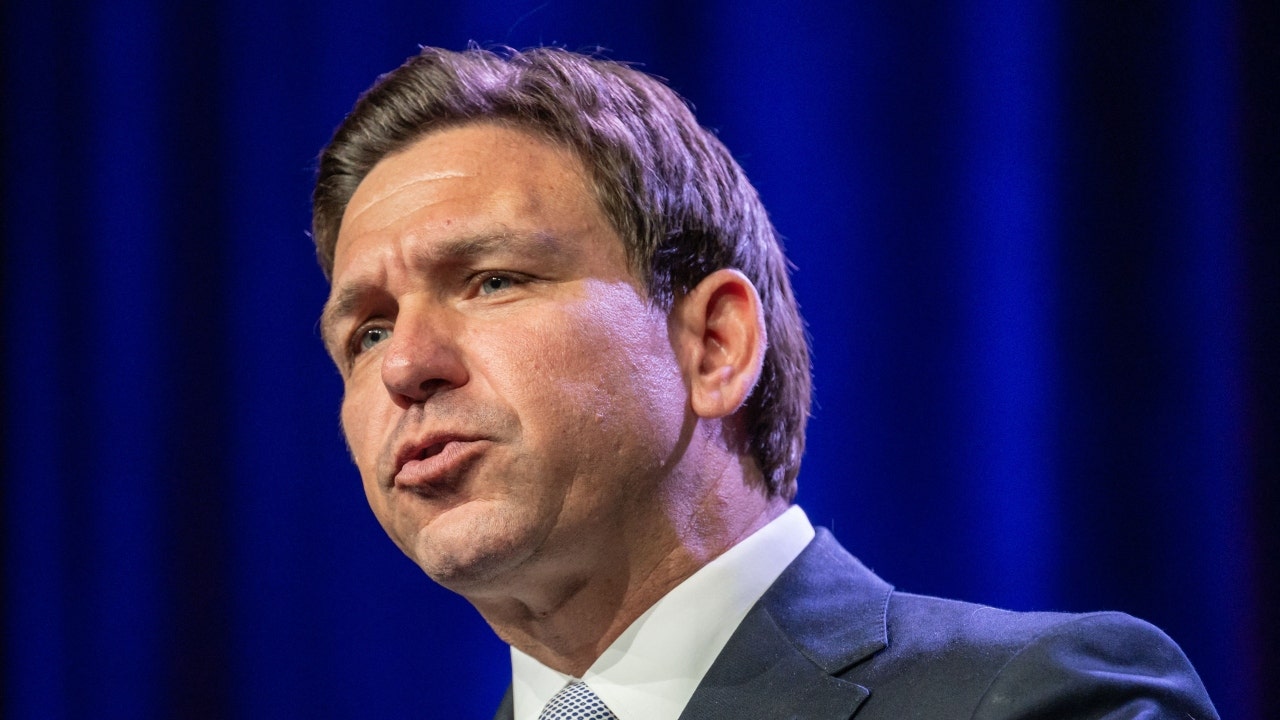Northeast
Porn star Austin Wolf arrested following FBI investigation

Adult film star Austin Wolf has been arrested and now faces child pornography charges following an investigation by the FBI, the Justice Department says.
Wolf, whose real name is Justin Smith, is accused of “sending and receiving hundreds of videos of child pornography via the Telegram application,” according to the U.S. Attorney’s Office for the Southern District of New York.
“I want to make it clear: those who distribute child sexual abuse images prey upon the most vulnerable in our society. Each image is a crime scene, leaving lasting scars on innocent victims,” FBI Assistant Director in Charge James Smith said in a statement. “The FBI is relentless in our pursuit of these perpetrators.”
Smith, 43, has been charged with one count of distribution and receipt of child pornography – which carries a mandatory minimum sentence of five years in prison and maximum sentence of 20 years – and one count of possession of child pornography, which carries a maximum sentence of 10 years, prosecutors say.
SKETCH SHOWS ATTEMPTED RAPE SUSPECT IN BROAD DAYLIGHT ATTACK ON WOMAN TANNING IN CENTRAL PARK
Adult film actor Austin Wolf attends the 2019 GayVN Awards show in Las Vegas, Nevada. (Gabe Ginsberg/Getty Images)
The Attorney’s Office alleges that the videos Smith sent and received “depicted children as young as infants, including a video showing a 10-year-old child bound and raped.”
“In addition to sharing child pornography via Telegram, Smith is also charged with possessing hundreds of additional videos containing child pornography in his Manhattan apartment,” it added.
Smith is set to be arraigned in Manhattan federal court today.
FBI HUNTS JOHN DOE SEX ATTACK SUSPECT THROUGH ENDANGERED CHILD MISSION

Adult film actor Austin Wolf speaks during the 2023 GayVN Awards show at Resorts World Las Vegas on Jan. 5 2023, in Las Vegas, Nevada. (Gabe Ginsberg/Getty Images)
Investigators say between March 24 and March 28 of this year, Smith, using an anonymous Telegram account, swapped hundreds of videos containing child porn with another person on the messaging platform. That person’s phone was later seized and searched by the FBI.
Then an FBI agent working undercover began chatting with Smith’s anonymous Telegram account, during which he revealed details confirming his identity, prosecutors say.

Austin Wolf is now facing child pornography charges following an investigation by the FBI. (Gabe Ginsberg/Getty Images)
“On April 21, 2024, the FBI executed a search warrant at SMITH’s Manhattan apartment, which revealed an SD card with hundreds of videos containing child pornography,” the Attorney’s Office added.
Read the full article from Here

Maine
Here’s how experts want to see Maine combat climate change in the next four years • Maine Morning Star

Maine’s climate action plan is due for an update later this year, and experts have already put forward a draft of what they’d like to see included.
The Maine Climate Council has until December 1 to update “Maine Won’t Wait,” the state’s four-year plan that outlines strategies for reducing carbon emissions and introducing cleaner energy sources in the state. In June, the council’s working groups dedicated to housing, transportation, coastal and marine sectors and more put forth suggestions for new and refined strategies the state should include in the updated plan.
Gov. Janet Mills created the climate council in 2019 to establish an action plan to help the state achieve carbon neutrality by 2045 and combat climate change. A recently-released assessment of climate change and its impacts on Maine showed that the state’s climate is getting warmer and seeing more severe weather. According to the report, each year from 2020 through 2023 ranked among the ten warmest years on record for Maine.
Many of the suggested strategies build on the efforts outlined in the original climate action plan, but there are a few new proposals — such as resiliency measures to address increasingly common spills from residential heating oil tanks and bolstering local food production.
Here’s a closer look at a sample of the strategies that the council is suggesting to implement in the next action plan.
Drive fewer miles, and do it with electric vehicles
As a rural state with limited public transportation, the last climate action plan underscored transportation — particularly personal vehicles — as the largest source of greenhouse gas emissions in Maine.
The proposed plan suggests accelerating the transition to light-duty electric vehicles, including plug-in hybrids. Likewise, the climate council is proposing a faster switch to zero-emissions medium- and heavy-duty vehicles.
In its proposal, the council’s Transportation Working Group outlined ways to aid in that transition including rebate programs to lower the cost and an education campaign for Maine communities and car dealerships to teach about the technology involved with electric cars and the incentives for buying one.
Maine toyed with the idea of ramping up electric vehicles earlier this year, but the Board of Environmental Protection rejected a rule in March that would have required clean, electric vehicles to make up the majority of new car sales by 2030. The board rejected it because of lingering questions about the policy, and said they believed such a large decision would be better placed in the hands of elected officials.
However, the state has and continues to expand charging infrastructure for electric vehicles. Maine plans to add more than 50 new high-speed EV chargers near busy highways and outdoor recreation areas in the next year. Currently, Maine has more than 1,000 EV charging ports across nearly 500 locations, according to a map from Efficiency Maine.
Even with cleaner cars, the proposed plan still suggests reducing the number of vehicle miles traveled.
Conserve more land, consume more local food
The climate council’s working group dedicated to Natural and Working Lands proposed to further three of its original goals in the new action plan. These include conserving more acreage of land, consuming more food grown in Maine and incentivizing woodland owners to do more carbon removal and storage.
The proposal notes that Maine has conserved about 50,000 acres annually in recent years, with a total of more than 4.3 million acres permanently conserved. That accounts for a little more than 22% of the state’s total acreage, but the working group is proposing to bump that up to 30% by 2030. To achieve that goal, the proposal said the annual conservation rate would need to increase nearly fivefold.
Since about a third of all human-caused greenhouse gas emissions are linked to food, there’s also a suggestion to increase the amount of food consumed in Maine from state food producers to 30% by the end of this decade.
To do that, the proposal outlines ways to bolster local food production by strengthening Maine farms and creating more markets to increase access to local food.
Make our buildings more resilient
To this point, climate strategies pertaining to buildings have focused on reducing the emissions coming from them. But the council’s Building, Infrastructure and Housing Working Group proposed an emphasis on resilience.
From homes to offices, buildings in the state are susceptible to climate-driven hazards such as large storms that can cause damage and create power outages. The proposal said buildings are even at an increased risk for wildfires. Flooding has also increased the number of oil spills from residential heating oil tanks, the working group wrote in the proposal.
That’s why the proposal has suggestions for increased resiliency measures like flood insurance and sump pumps with battery back-ups. The working group also recommends creating a new program to properly drain, remove and dispose of high-risk residential heating oil tanks and considering a comprehensive management plan for what to do with those tanks as the state transitions to cleaner energy sources.
Public feedback
A survey is available on the council’s website for people to share suggested updates to the state’s strategies to address climate change. The written proposals and video presentations from all of the working groups are also available on the council’s website.
Massachusetts
Massachusetts emergency shelter spending topped $700M last month, report says

Massachusetts spending on the emergency shelter system housing migrant families and local residents has crossed the $700 million threshold, according to data released Monday.
Government budget writers have projected the state will shell out approximately $932 million on the emergency shelter system in fiscal year 2024 and another $915 million in fiscal year 2025, which began on Monday. The massive costs were spurred by an influx of migrants over the past year.
Gov. Maura Healey’s finance and housing offices said the state had spent $715 million on the emergency shelter program as of June 27, though the figure is largely representative of costs through mid-March.
“March invoices are currently being received and processed,” the report said.
As migrants arrived in droves to Massachusetts, the state turned to a network of hotels and motels to increase state-run shelter capacity for families with children and pregnant women. Housing people in those locations can often prove costly, sometimes running $300 a night.
Healey over the past year has approved restrictions on the shelter system, including a nine-month time limit on families’ stay, a 7,500 family cap, a monthly requirement for people in overflow sites to reapply for services, and just last week a prohibition on sleeping overnight at Logan Airport.
At an unrelated event in Lowell Tuesday, Healey said while the state is required to provide families with children and pregnant women with shelter, there is only so much room.
“It’s why I took action this fall to announce the cap and to establish a waiver,” she told reporters. “My position has been, we simply cannot shoulder this. It’s why I also demanded time and time again that Congress step up and act and provide relief to the state.”
Boston, Worcester, Springfield, and Lynn are playing host to the most families in shelters, hotels, and motels of the 351 cities and towns in Massachusetts, according to the report.
About $210 million, or one third of the total money spent, has been paid to shelter providers who run traditional locations as well as the hotels, motels, and overflow sites, according to the report.
Another $24 million has gone to municipalities to help alleviate costs associated with an increased number of students from shelters, the report said. The state has also spent $2.7 million for “additional educational supports” like student transportation and multilingual faculty.
After Healey put a capacity limit on the emergency shelter system, those who applied for services were directed to overflow sites, including at state-owned facilities in Lexington, Roxbury, Chelsea, Cambridge, and Norfolk.
The locations were oftentimes unsuited to house families immediately and the state had to spend money to upgrade the sites. The report released Monday shows officials have spent $1.1 million to make “life safety improvements” at overflow sites.
There were 7,463 families in the emergency shelter system, another 417 at overflow sites, and 699 on the waitlist for placement as of June 27, according to state data and the report.
A separate report released Monday provides an update on an effort to move 400 migrant families out of state-run shelters and into stable housing by the end of the year.
Healey and the state’s eight resettlement agencies inked $10.5 million worth of contracts to stand up the program, which takes a well-known resettlement strategy used at the federal level with humanitarian parolees from Afghanistan and Ukraine and applies it to those in local emergency shelters.
Ascentria Care Alliance committed to helping 75 families in the Worcester and Greater Springfield area move into long-term housing and is expected to receive $1.5 million to do so, the most of the eight organizations, according to the report.
Five other groups contracted to help 50 families and are in line to receive $1 million while Jewish Family Service of Metrowest agreed to assist 25 families and is expected to receive $500,000 to do so, the report said.
New Hampshire
Bob’s Stores is closing all New England locations. What it means in New Hampshire
Bob’s Stores is closing all of its store locations, including one in Hampshire.
The discount retailer announced it’s closing all of its locations throughout Connecticut, Massachusetts, New Hampshire, New Jersey, New York and Rhode Island. The only New Hampshire location is located at 1400 Oaklawn Ave. in Cranston.
Bob’s Stores President Dave Barton said the company’s financial struggles led to the liquidation of their physical stores.
“Bob’s has been a stalwart of our local communities for nearly 70 years, and we know our customers remember us as having been there for major moments in their lives,” Barton said. “We remain grateful to our vendors, suppliers, customers and employees for all of their support over the years.”
Bob’s Stores’ going out of business sale
Bob’s locations started Going Out of Business sales in stores on Friday, June 28, with discounts of ranging 30% to 70% off, according to a press release.
Items like workwear, footwear, team wear and casual clothing will be severely discounted. Certain furniture and equipment products will also be on sale.
Can you use Bob’s Store gift cards?
Store credit and Bob’s Stores gift cards will be usable up until the stores’ last day open. No returns will be accepted at store locations.
Store business will officially be closed to the public after July 14, 2024.
Is Bob’s Discount Furniture closing too?
Bob’s Discount Furnituren, which has several New Hampshire locations, is not impacted. While the name is similar the two stores are owned by different companies. Bob’s Discount Furniture is owned by Bain’s Capital, while Bob’s Stores is a subsidiary of GoDigital Media Group.
Who founded Bob’s Stores?
Bob Lapidus founded Bob’s Stores when he opened his first “Bob’s Surplus” back in 1954. He died in 2007, at the age of 78.
Rin Velasco is a trending reporter. She can be reached at rvelasco@gannett.com.
-

 News1 week ago
News1 week agoA Florida family is suing NASA after a piece of space debris crashed through their home
-

 Politics1 week ago
Politics1 week agoBiden official says past social media posts don’t reflect ‘current views,’ vows to support admin ‘agenda’
-

 World1 week ago
World1 week agoIsrael accepts bilateral meeting with EU, but with conditions
-

 World1 week ago
World1 week agoNetanyahu says war will continue even if ceasefire deal agreed with Hamas
-

 Politics1 week ago
Politics1 week agoDeSantis signs bill allowing residents to kill bears, vetoes bill that fines slow left lane drivers
-

 News1 week ago
News1 week agoWoman accused of trying to drown Muslim child in Texas in possible hate crime
-

 Movie Reviews1 week ago
Movie Reviews1 week agoI Am: Celine Dion Movie Review: A gut wrenching account of Celine Dion’s quest to find her voice
-

 World1 week ago
World1 week agoOver 10,000 Poles participate in Pride parade in Warsaw














